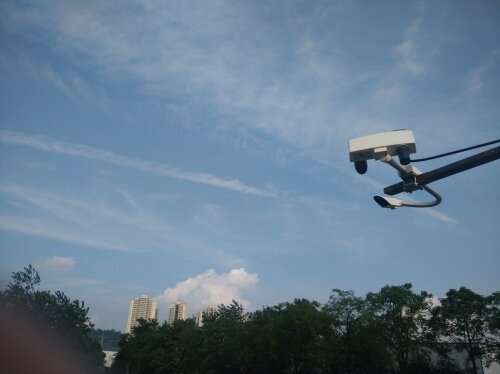Extending coverage of PM2.5 monitoring to improve air quality

Particulate matter in the atmosphere can result in poor air quality and visibility, posing a risk to human health and transportation safety.
Now, a team of researchers in China has improved the method to obtain mass concentrations of particulate matter from widely measured humidity and visibility data. The results were published in Advances in Atmospheric Sciences.
The researchers specifically examined mass concentrations of PM2.5, which is particulate matter with an aerodynamic diameter less than 2.5 micrometers—roughly the size of one seventh of a pollen grain.
"Particulate matter, especially PM2.5, is of great concern to both public and scientific communities in recent years," said the corresponding author, DENG Zhaoze from the Institute of Atmospheric Physics (IAP) of the Chinese Academy of Sciences. "The number of observational stations that measure particulate matter mass concentrations keeps increasing. However, they are mainly located in urban areas, and the period of monitoring is very limited for most of them."
By extending the available data to include larger spatial and temporal coverage, a broader understanding of how particulate matter evolves could emerge, according to DENG. That could be especially helpful when it comes to visibility in daily life. The distance a person can see, such as a pilot flying an airplane, is directly linked to particulate matter mass concentrations.
"Atmospheric visibility is a measure for light extinction that is mainly caused by particles suspended in the atmosphere," said first author JI Denghui, who is also affiliated with IAP. "At high ambient relative humidity (RH), visibility is not only influenced by dry particles, but also by water condensed on particles."
By understanding the relationship among relative humidity, visibility and particulate matter mass concentrations, the researchers developed a method to estimate the mass concentrations using only routine measurements of RH and visibility. Although the spatial and temporal coverage of particulate matter mass concentration measurements is limited, long-term measurements of relative humidity and visibility is available for many locations.
"The proposed method performed well for the dataset in this study," DENG said, referring to data obtained from a field campaign carried out in January 2019 in southwest China. "We would like to further investigate its performance in other seasons and also other locations. Parameters characterizing the relationship might vary and need to be localized."
The goal, according to DENG, is to apply this method to generate datasets of particulate matter mass concentrations based on extensive ground-level visibility data from meteorological stations or optical data from satellites. Eventually, the datasets could help finetune mass concentration estimations for other readily available measurements.
More information: Denghui Ji et al. Estimation of PM2.5 Mass Concentration from Visibility, Advances in Atmospheric Sciences (2020). DOI: 10.1007/s00376-020-0009-7
Provided by Chinese Academy of Sciences


















